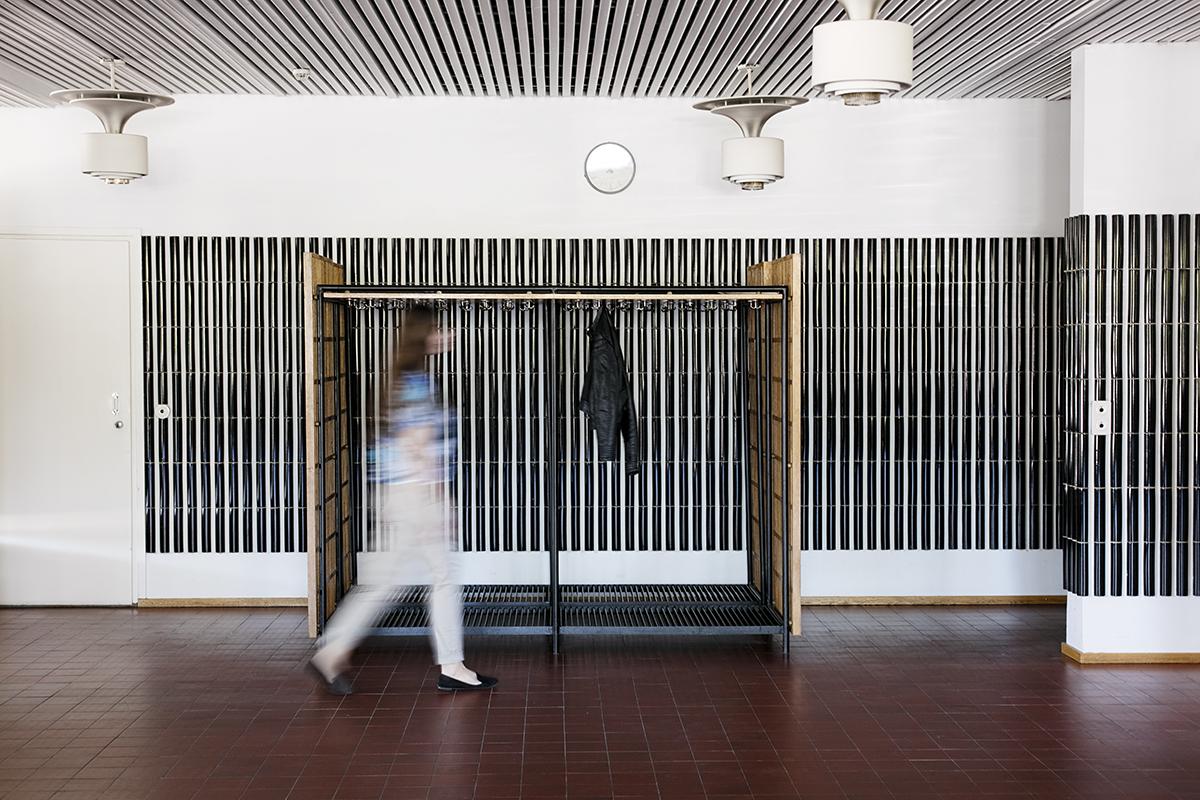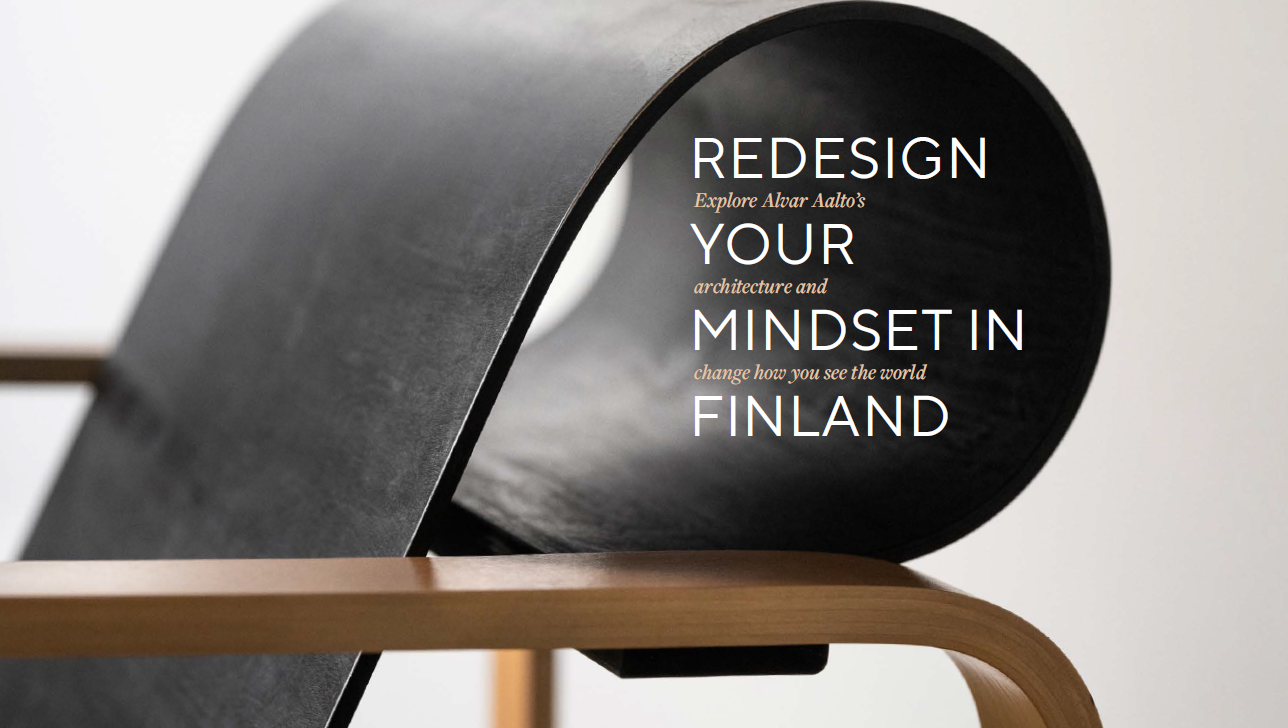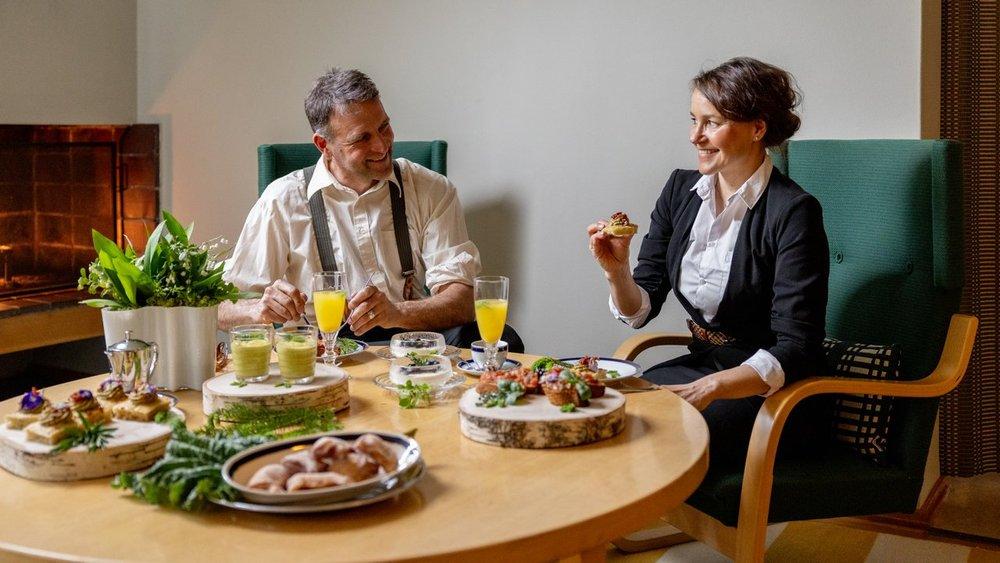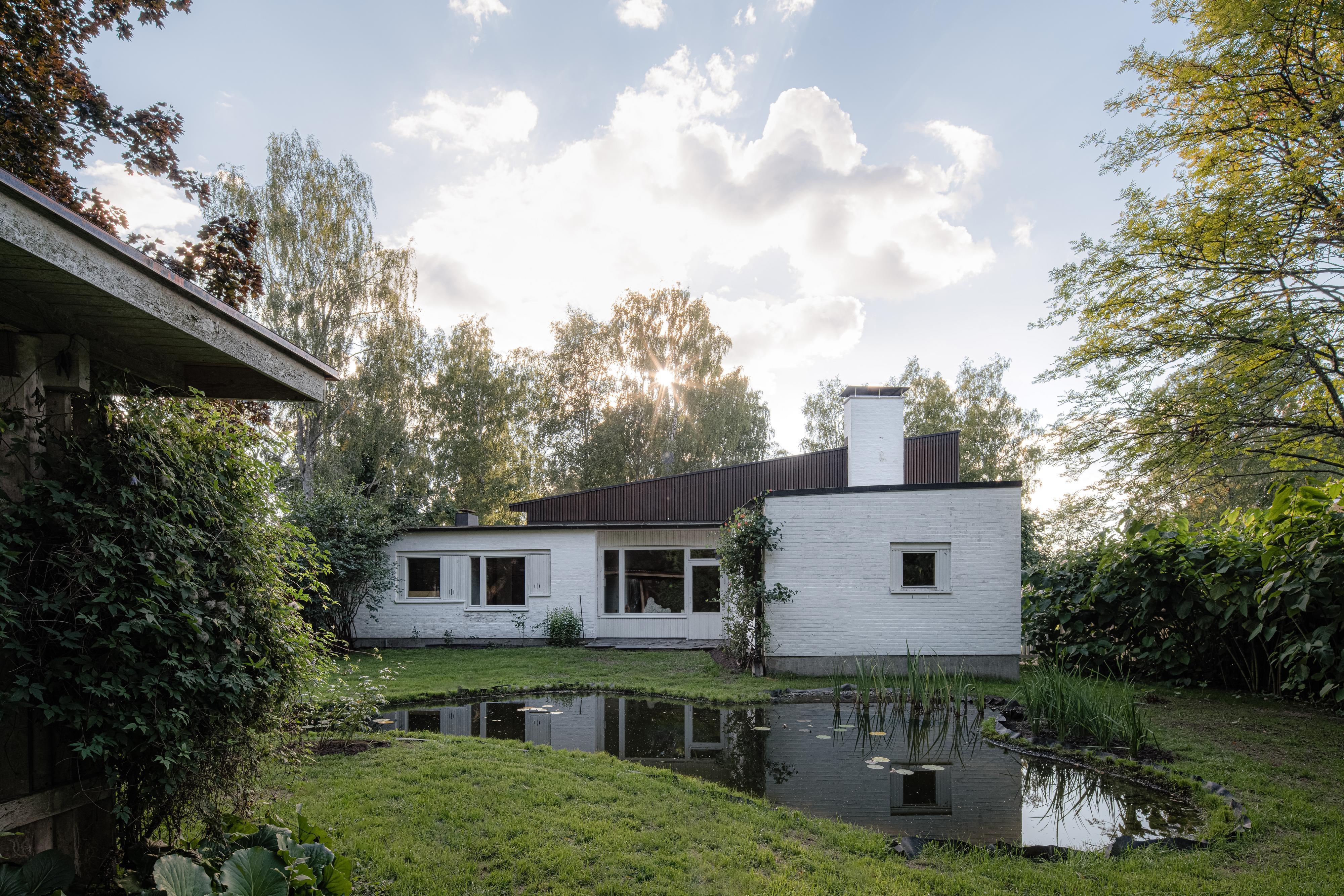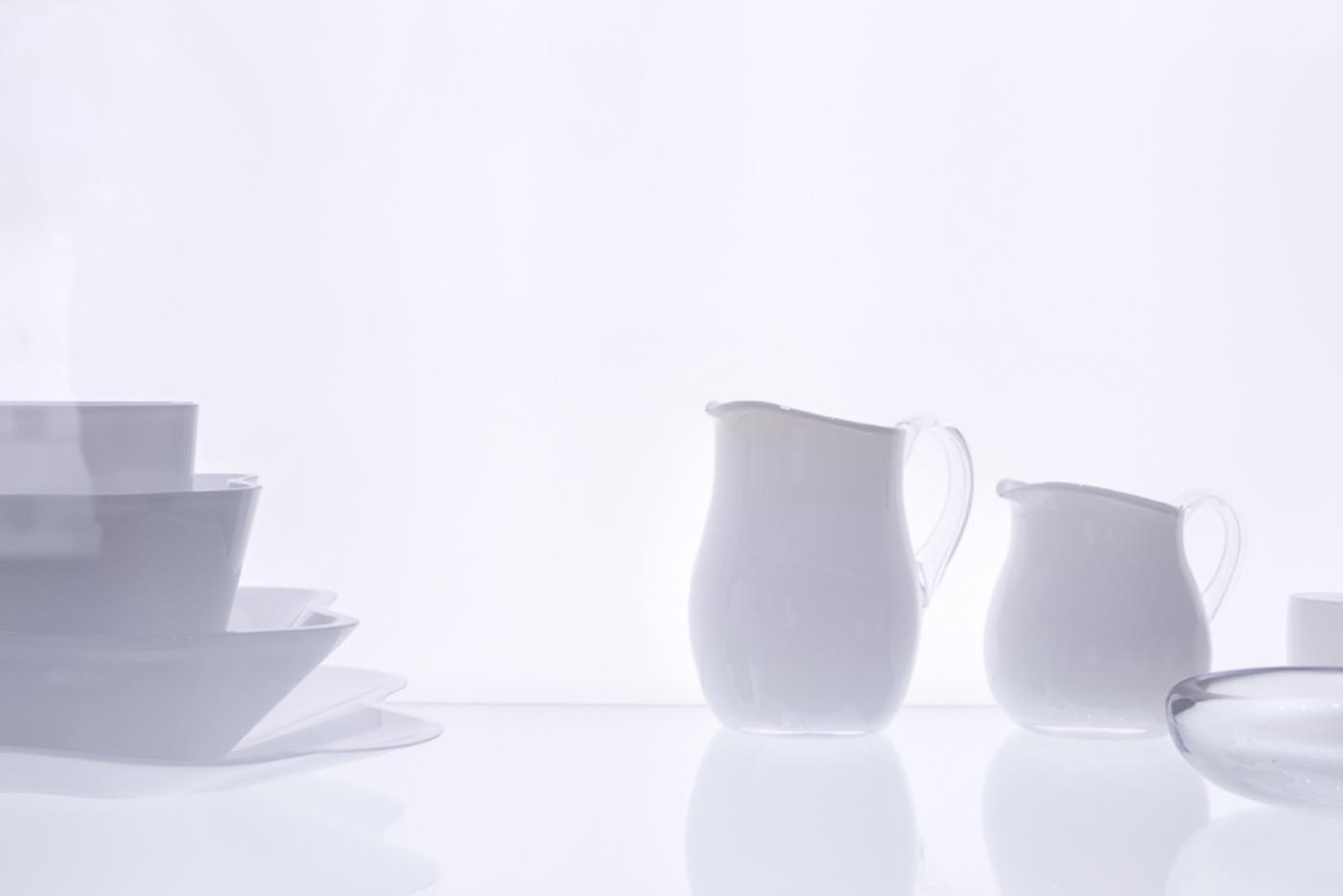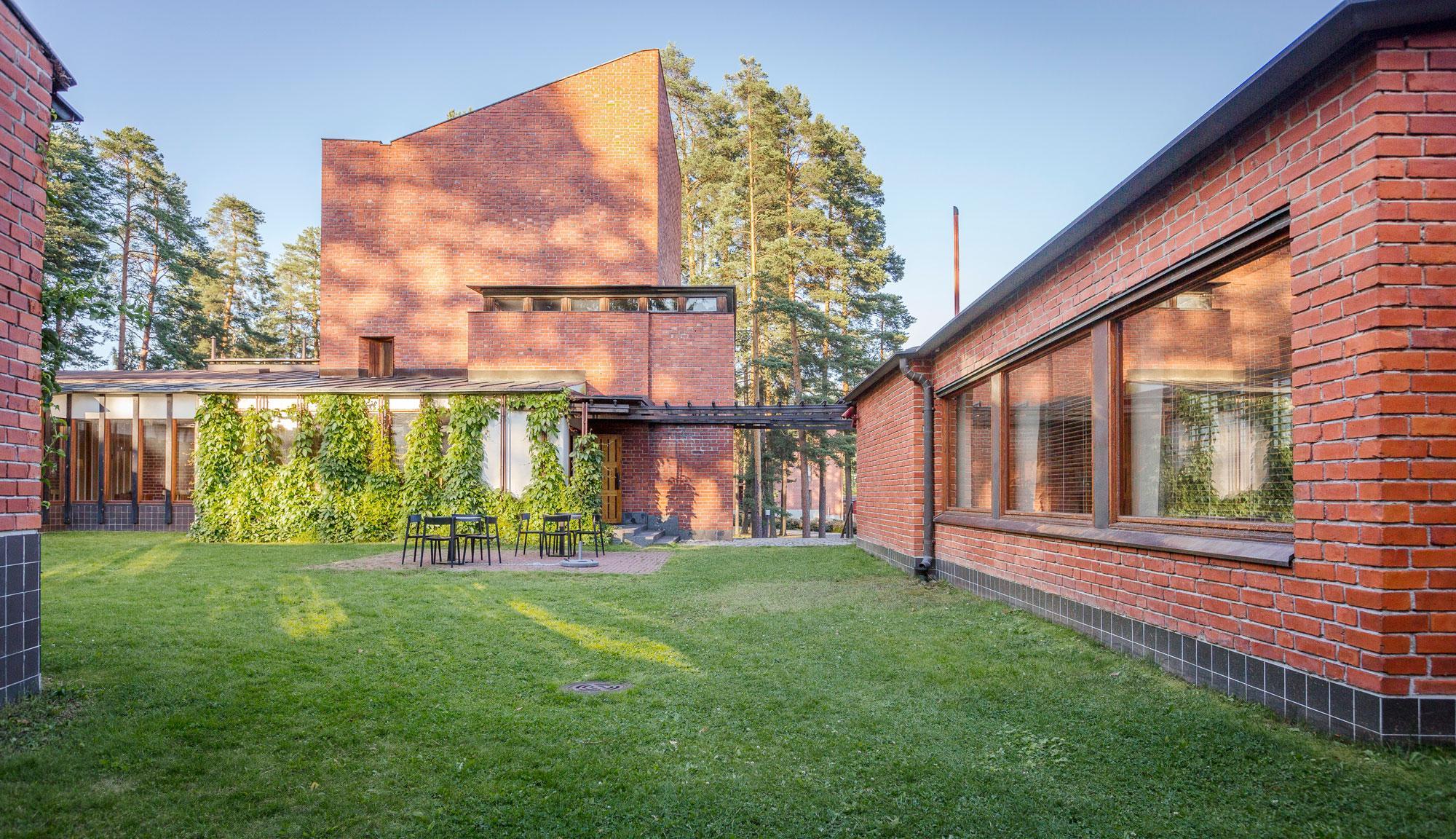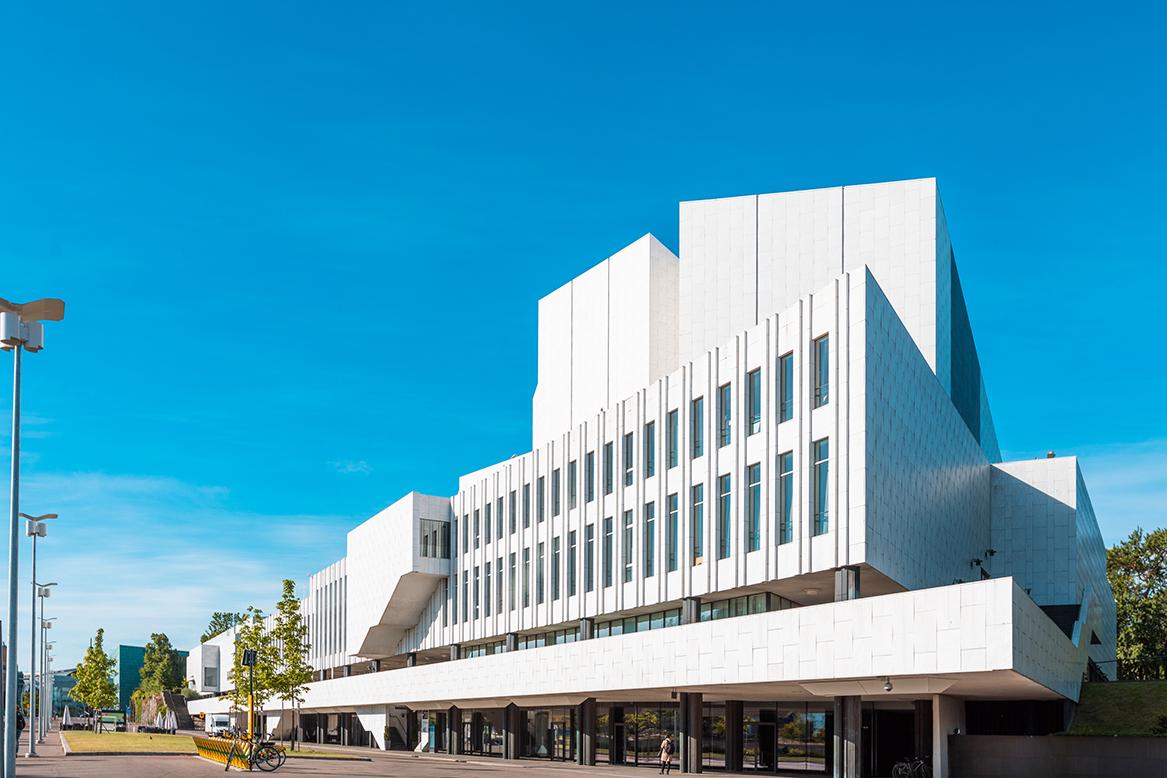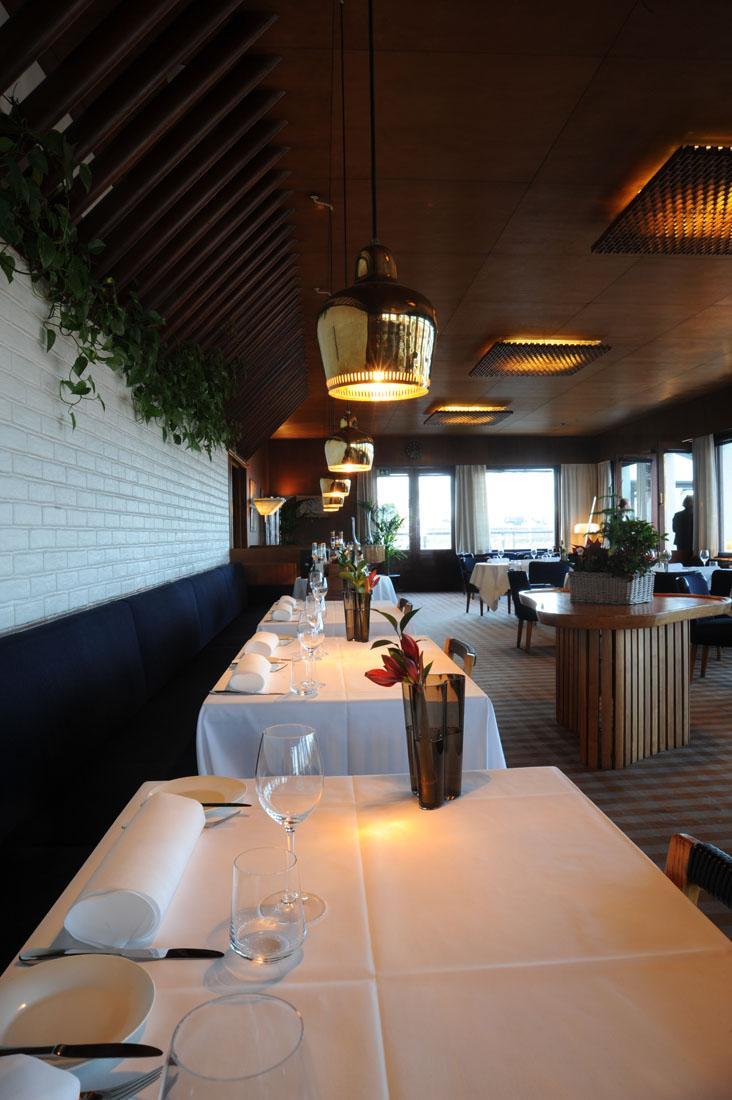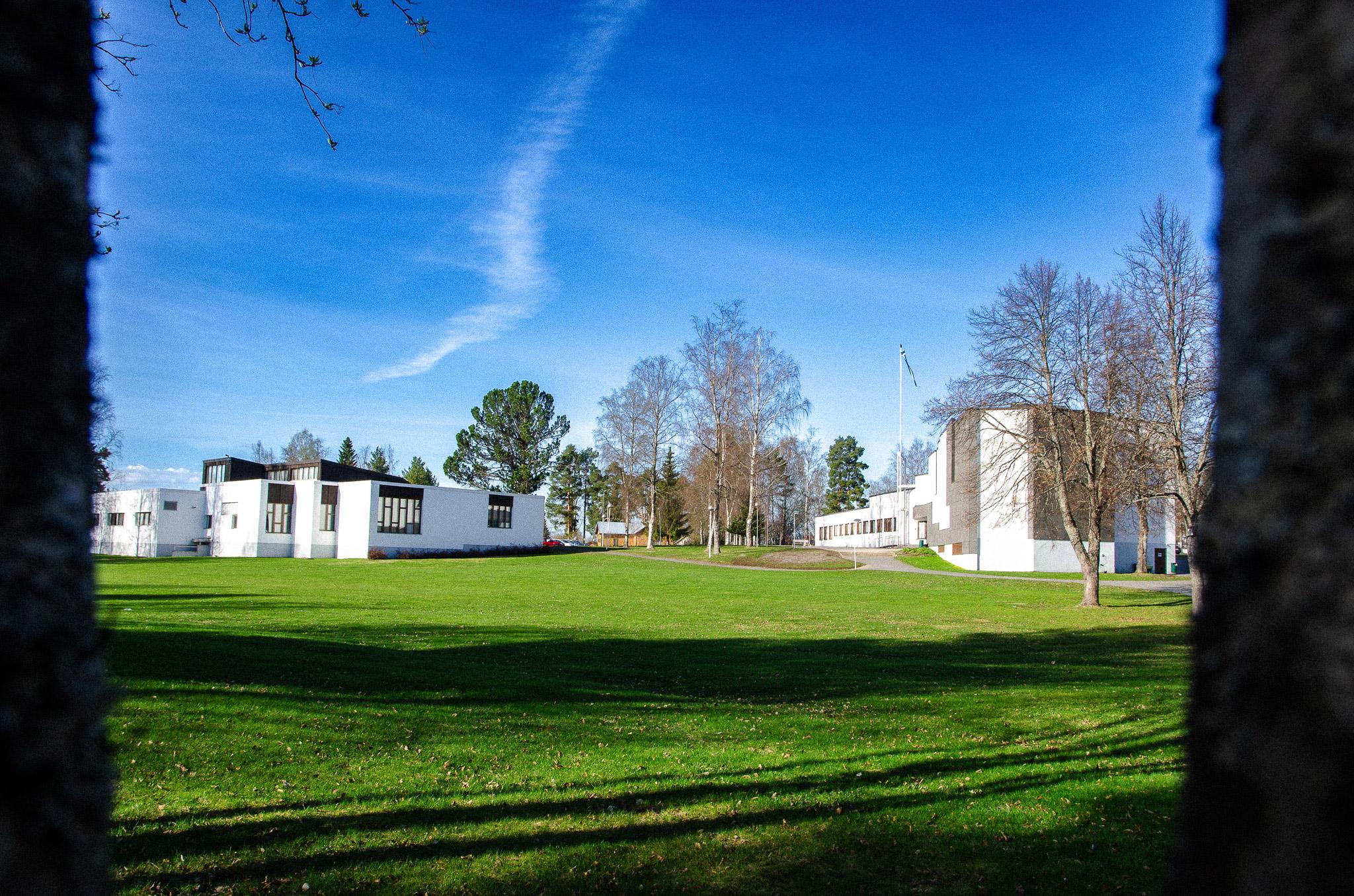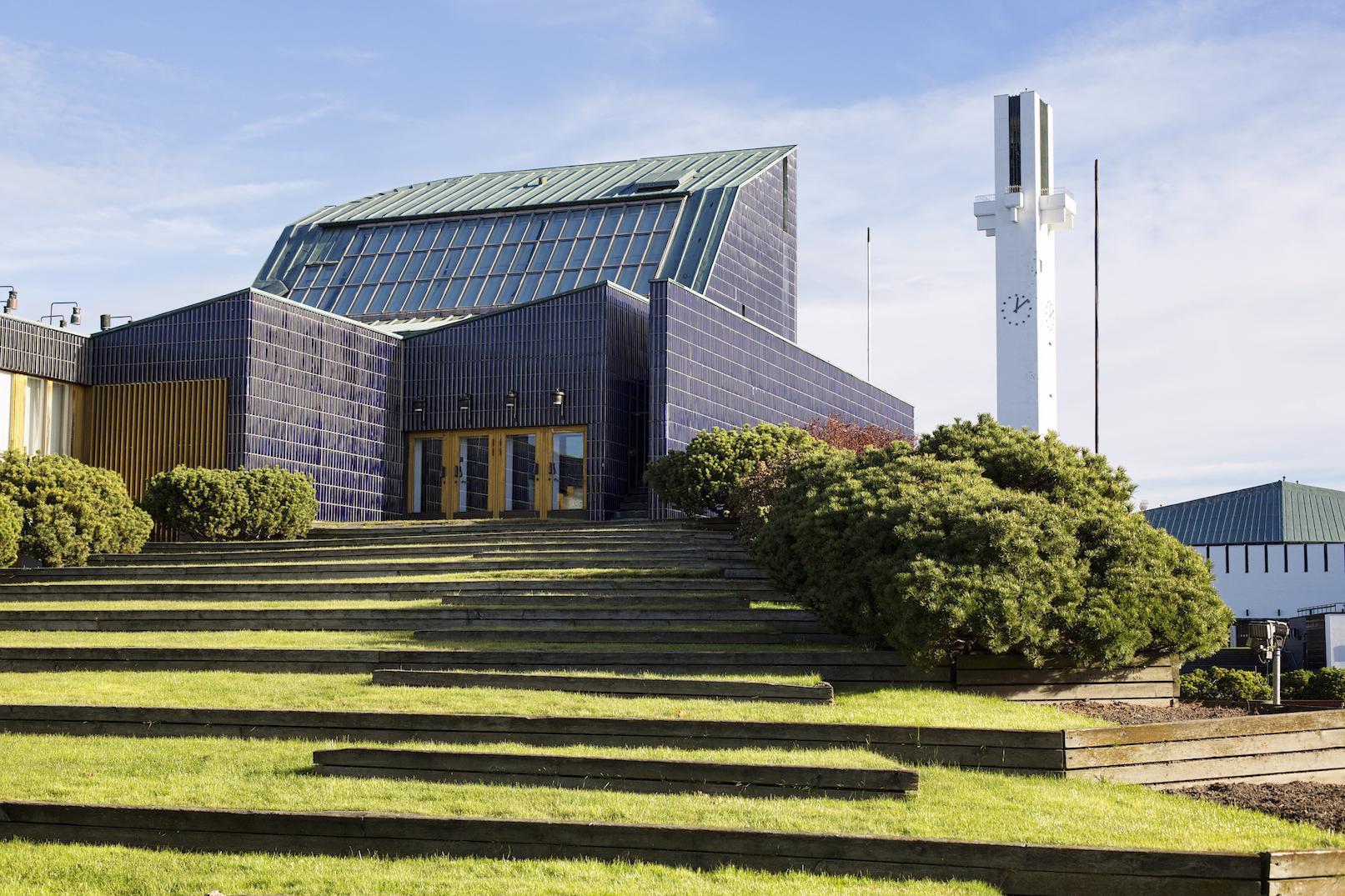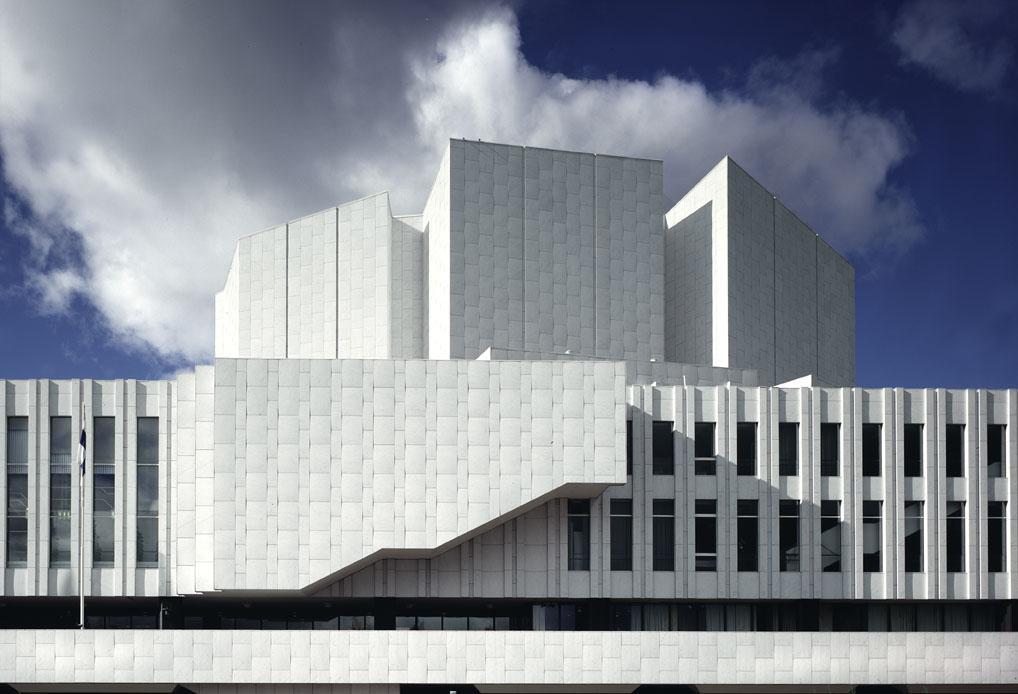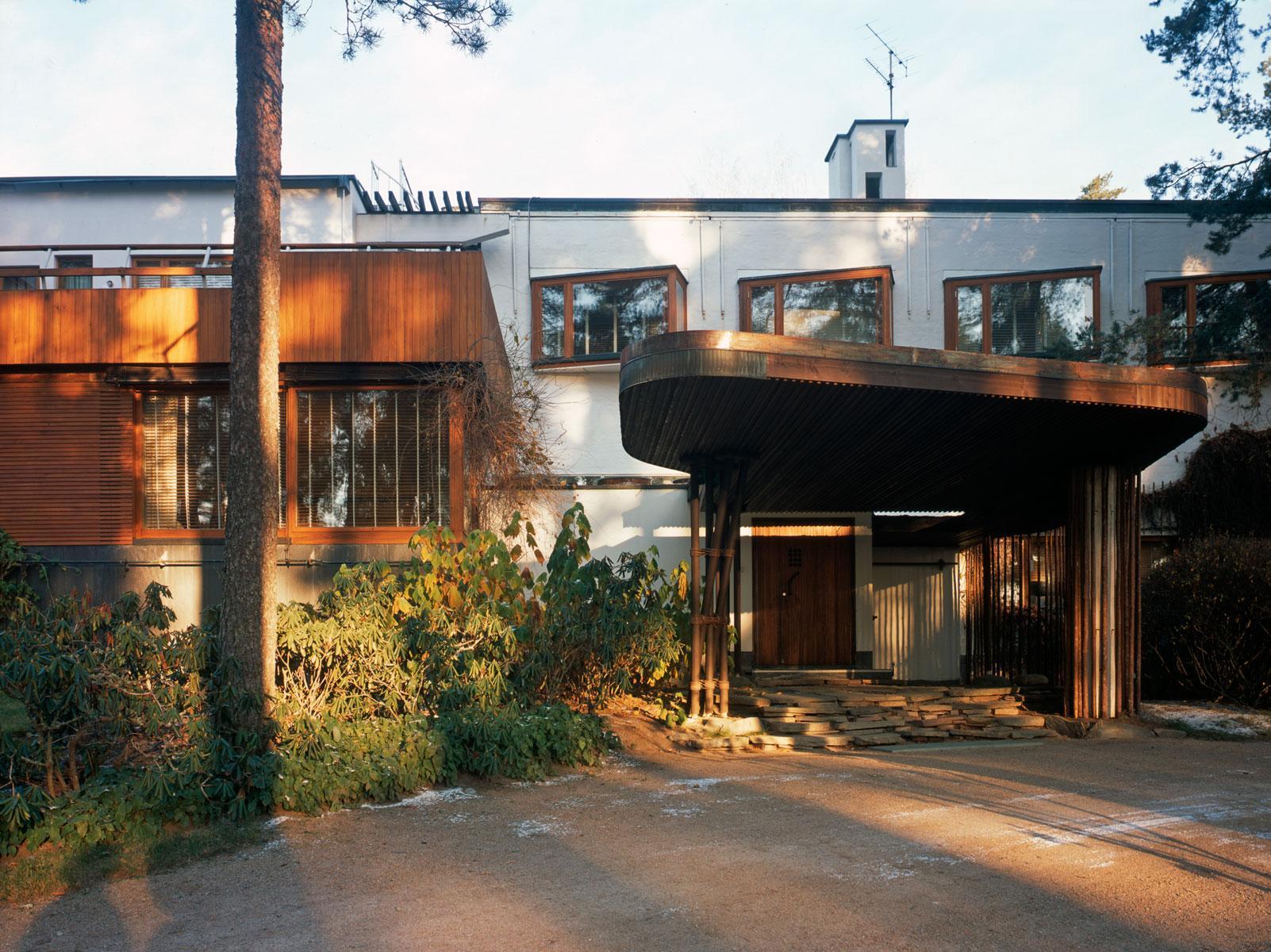Ahlström’s Noormarkku Works area is one of the largest and most impressive old engineering works areas in Finland, with the visitors having an opportunity to absorb the atmosphere of bygone industrial times. The area houses a high-standard restaurant and hotel, with elegant accommodation for up to 60 guests. The club restaurant offers local and wild food as well as game hunted under the instruction of the game warden. Guided tours are arranged in the dignified cultural surroundings. In addition to the Sawmill Museum and Ahlström Voyage exhibition, travellers can visit (upon advance reservation) Villa Mairea, probably the highlight of the design career of Alvar and Aino Aalto.
Villa Mairea
Located within the Noormarkku Works area, Villa Mairea was built in 1939 to serve as the home of Maire (née Ahlström) and Harry Gullichsen. The progressive couple were patrons of the arts, and they were interested in the clean-cut expression of modernism. Their good friends, the architects Aino and Alvar Aalto, had an opportunity to apply free and experimental design in the planning of Villa Mairea.
These favourable circumstances gave rise to a unique work of art, which is currently considered an international masterpiece in 20th century architecture. Interior design for Villa Mairea was in the hands of Aino Aalto.
Through the life’s work of Maire Gullichsen, Villa Mairea is linked in many ways to the arts institutions and design sector of Finland, for example to the furniture business Artek and Galerie Artek, Free Art School and Pori Art Museum. She played a decisive role in the establishment of all of these.
Villa Mairea is only open to visitors by advance reservation.
Villa Mairea
A. Ahlström Osakeyhtiö in the hub of Finnish industrial history
A. Ahlström Kiinteistöt Oy has received awards for keeping and maintaining the Noormarkku and Kauttua Works areas, which hold cultural history value.
The award-winning Ahlström Voyage exhibition housed in the old smithery describes Finnish industrial history over the past 160 years. The exhibition presents iconic glass art from the collections of the Iittala, Karhula and Riihimäki glass factories, such as unique specimens of the Savoy vase, an impressive collection of Tapio Wirkkala’s production and Timo Sarpaneva’s Orkidea. There is also information on the friendship and co-operation between the Aalto and Gullichsen families.
The forests and land and water areas owned by Ahlström are in a pristine condition. Guided full-service fishing and canoe safaris as well as hunting events of small and large game for groups are arranged in these areas. The nature trail in the forest adjacent to the Noormarkku Works area is available to everyone, and there are also guided birdwatching trips.
The Koli sauna includes a range of various types of saunas such as chimneyless sauna and wooden sauna as well as an outdoor hot tub beside the River Noormarkunjoki.
Noormarkku works
Pori Art Museum and Jusélius Mausoleum
Pori Art Museum is a museum of contemporary art, built around the collection of Maire Gullichsen in 1981. The museum presents the latest trends in Finnish and international art.
Constructivism, Fluxus and trends in land and conceptual art have paved the way for exploring new phenomena. The collections and archives of the museum that serves as the regional art museum of Satakunta focus on modernism and newer art.
The National Urban Park of Pori houses one of the most famous sights in Pori at the Käppärä cemetery: Jusélius Mausoleum. The building of the mausoleum was commissioned by the industrialist Fritz Arthur Jusélius as the final resting place of her daughter Sigrid, who died of
tuberculosis at the age of 11.
The mausoleum is of the neo-gothic architectural style, and its original frescos painted by Akseli Gallen-Kallela, the foremost representative of the nationalist romanticist style in Finland, were destroyed in the early 20th century. By 1925, the frescos had been replaced by a bronze relief by the sculptor Emil Cedercreutz. The current frescos were painted in 1933 to 1939 by the artist Jorma Gallen-Kallela after sketches drawn up by his father Akseli Gallen-Kallela.
Visit Pori
Pori Art Museum
